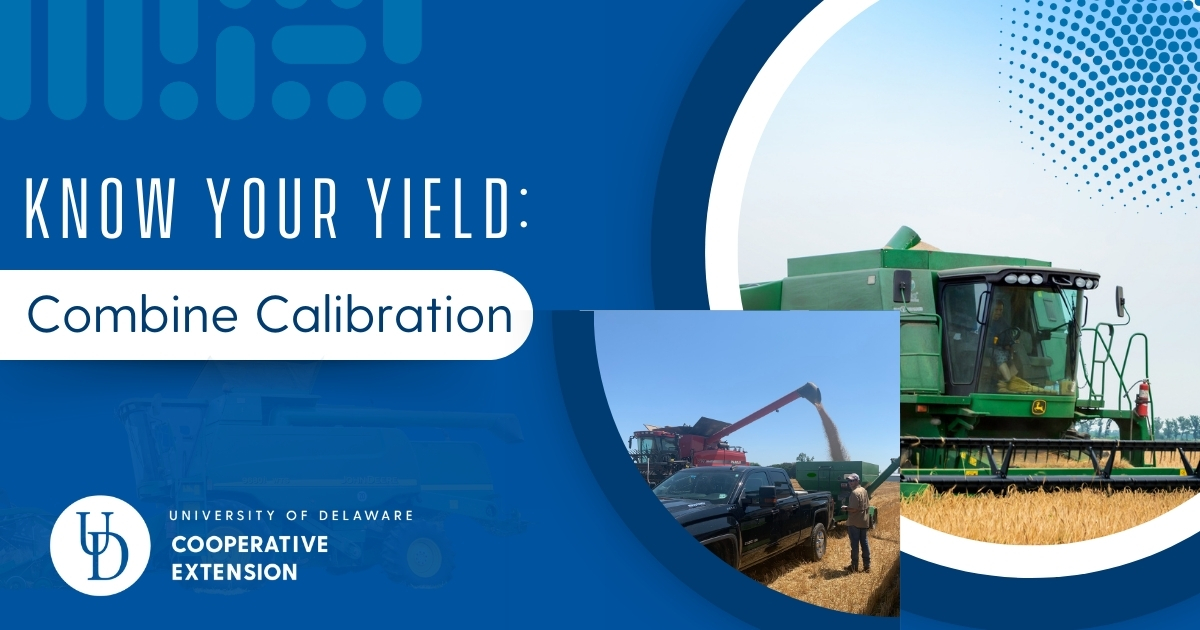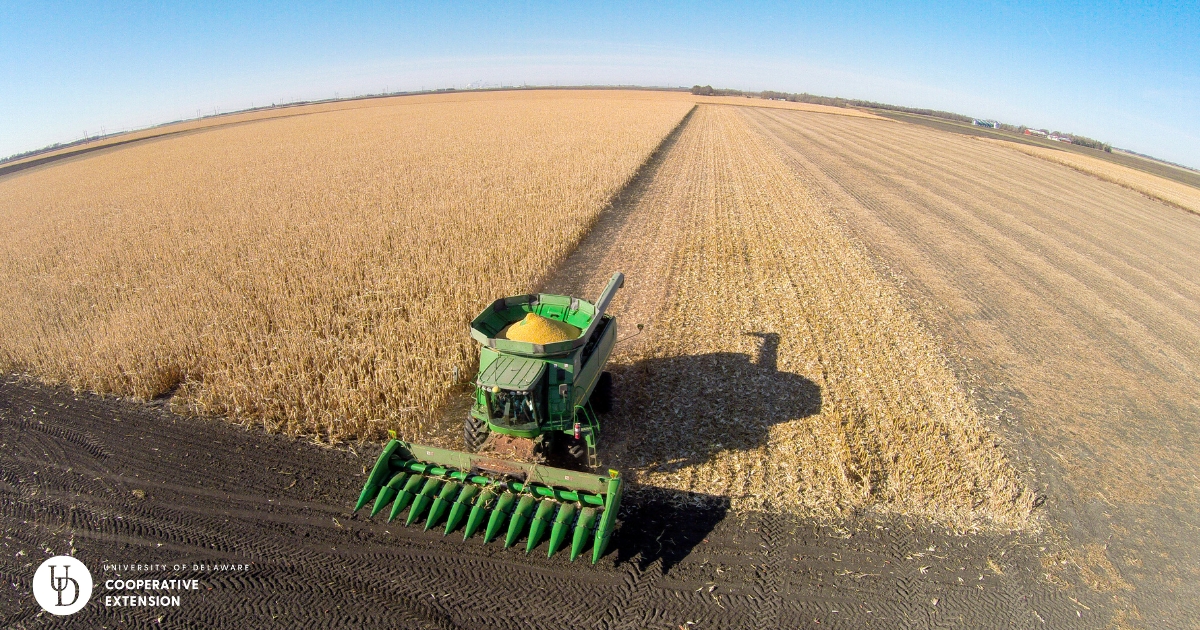
Category: Cooperative Extension

Know Your Yield: Combine Calibration
August 02, 2024 Written by Nicholas Adams, New Castle County Agriculture Extension Agent
Combine calibration is often considered either an annoyance during harvest season or a necessary step in an operation. Whichever way you look at calibration, it is an essential step to not be overlooked in your operation. With the variety of yield monitors on the market, it can often be seen as a time-consuming step when field crops are ready to be harvested. Luckily there are several resources available to assist with the calibration, and one of the most important is your yield monitor’s manual. This will generally provide a step by step calibration guide for you and help explain the process. Iowa State Cooperative Extension has an interactive guide for these steps as well and can be found through the following link: https://digitalag.ae.iastate.edu/Harvest
Calibrations
It is important to know that the recommendation is to complete a calibration with each different crop you plan to harvest, and this can be another overlooked step. Each monitor is different in the way calibrations are saved; some may only let you calibrate one crop at a time, while others will allow you to store calibrations for each crop. These can be updated seasonally.
Looking into possibilities to weigh the crop’s actual harvested weight for input to the monitor can be burdensome. Weigh wagons and seed tenders are generally used, but it is important to ensure the equipment is properly calibrated as well with a certified scale. If those are not an option, select monitors will allow retroactive calibrations and you can use a weight ticket from a certified scale or granary to input the actual harvested weights.

After calibration is complete, it is important to understand how your monitor stores the yield data. While some older units require a memory device to be plugged in during harvest, others may have onboard storage, and it is important to make sure there is enough storage space for the upcoming harvest. Newer monitors can wirelessly transfer yield data to a program of your choice but may require cellular service.
Properly calibrated yield data is essential to reviewing the growing season and planning for the next. When properly tracked in your operation, knowing the exact yields helps with crop budgeting and variety performance on each farm. This data can also be used for several other opportunities, including soil sampling, precision conservation, and pinpointing scouting efforts moving forward.
